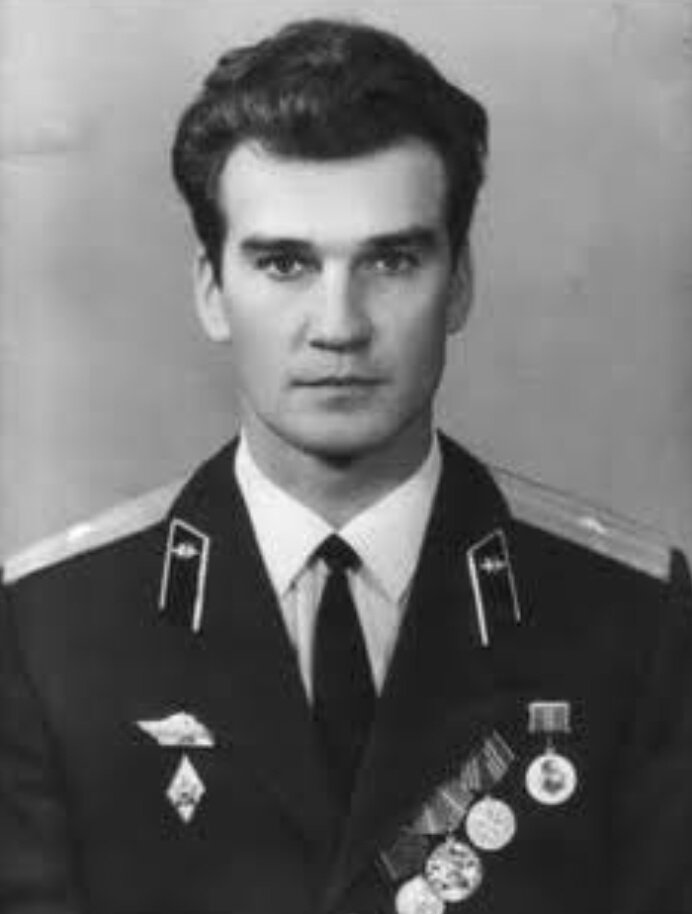“The Man Who Saved The World”
On the night of September 26, 1983, the world almost ended. It was the height of the Cold War, and each side bristled with nuclear weapons. Earlier that spring, President Reagan had announced the Strategic Defense Initiative “Star Wars,”
(1/n)
On the night of September 26, 1983, the world almost ended. It was the height of the Cold War, and each side bristled with nuclear weapons. Earlier that spring, President Reagan had announced the Strategic Defense Initiative “Star Wars,”
(1/n)
a planned missile defense shield that threatened to upend the Cold War’s delicate balance. Just three weeks earlier on September 1, the Soviet military had shot down a commercial airliner flying from Alaska to Seoul that had strayed into Soviet air space.
(2/n)
(2/n)
269 people had been killed, including an American congressman. Fearing retaliation, the Soviet Union was on alert. On the night of September 26, 1983, Lieutenant Colonel Stanislav Yevgrafovich Petrov of the Soviet Air Defense Forces started his graveyard shift as the....
(3/n)
(3/n)
senior watch officer at Serpukhov-15, a bunker complex south of Moscow. The complex was one of the command centers responsible for providing early warning of an incoming nuclear strike, this one based on information gathered by the Russian Oko satellites orbiting Earth.
(4/n)
(4/n)
The Oko satellite system was connected with the most powerful supercomputer the Soviet Union had produced: the M-10. Specifically designed for image analysis, the M-10 could tell the difference between, say, a forest wildfire and a genuine missile launch.
(5/n)
(5/n)
At around 3:00 a.m. on Sept 27 when Petrov was on duty, a unique event took place. The system issued a grave report: the United States had launched a nuclear missile at the Soviet Union. To make matters worse, the computer pronounced it a “high confidence” event,
(6/n)
(6/n)
virtually excluding that an error had been committed. In the bunker, sirens blared and a giant red backlit screen flashed “launch,” warning him of the detected missile, but still Petrov was uncertain. Oko was new. He worried that the launch might be an error. He waited.
(7/n)
(7/n)
Another launch. Two missiles were inbound. Then another. And another. And another—five altogether. The screen flashing “launch” switched to “missile strike.” The system reported the highest confidence level. There was no ambiguity: a nuclear strike was on its way.
(8/n)
(8/n)
Soviet military command would have only minutes to decide what to do before the missiles would explode over Moscow.
Petrov had a funny feeling. Why would the United States launch only five missiles? It didn’t make sense.
(9/n)
Petrov had a funny feeling. Why would the United States launch only five missiles? It didn’t make sense.
(9/n)
A real surprise attack would be massive, an overwhelming strike to wipe out Soviet missiles on the ground. Petrov wasn’t convinced the attack was real. But he wasn’t certain it was a false alarm, either.
(10/n)
(10/n)
With one eye on the computer readouts, Petrov called the ground-based radar operators for confirmation. If the missiles were real, they would show up on Soviet ground-based radars as they arced over the horizon. Puzzlingly, the ground radars detected nothing.
(11/n)
(11/n)
Petrov put the odds of the strike being real at 50/50, no easier to predict than a coin flip. He needed more information. He needed more time. All he had to do was pick up the phone, but the possible consequences were enormous.
(12/n)
(12/n)
If he told Soviet command to fire nuclear missiles, millions would die. It could be the start of World War III.
Petrov went with his gut and called his superiors to inform them the system was malfunctioning. He was right: there was no attack.
(13/n)
Petrov went with his gut and called his superiors to inform them the system was malfunctioning. He was right: there was no attack.
(13/n)
Sunlight reflecting off cloud tops had triggered a false alarm in Soviet satellites. The system was wrong. Humanity was saved from potential Armageddon by a human “in the loop.”
Reference:
The Darkening Web
Army of None
Reference:
The Darkening Web
Army of None

 Read on Twitter
Read on Twitter


